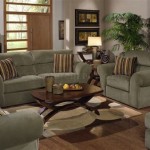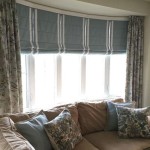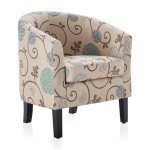Popular Rugs For Living Room: A Comprehensive Guide
The living room is often considered the heart of a home, a space for relaxation, entertainment, and social gatherings. Ensuring its comfort and aesthetic appeal is paramount. Among the many elements contributing to a well-designed living room, rugs play a significant role. They provide warmth underfoot, anchor furniture arrangements, define zones, and add visual interest to the space. Choosing the right rug, however, can be a daunting task given the myriad of options available. This article will explore some of the most popular rugs for living rooms, examining their characteristics, benefits, and suitability for different styles and needs.
Understanding Rug Materials
The material of a rug significantly impacts its durability, texture, appearance, and maintenance requirements. Popular choices include natural fibers such as wool, cotton, silk, and jute, as well as synthetic materials like nylon, polyester, and polypropylene. Each material possesses unique qualities that make it suitable for different living room settings.
Wool: Wool rugs are renowned for their durability, softness, and inherent stain resistance. The natural lanolin in wool fibers repels liquids, making them easier to clean. Wool rugs also offer excellent insulation and can help dampen sound, contributing to a quieter and more comfortable living room environment. They come in a wide range of styles and weaves, from plush shag rugs to intricate Persian designs. However, wool rugs are generally more expensive than synthetic alternatives and may require professional cleaning.
Cotton: Cotton rugs are a more affordable and versatile option. They are soft, lightweight, and relatively easy to clean, often being machine washable. Cotton rugs come in a variety of colors and patterns, making them suitable for casual and contemporary living room styles. However, cotton rugs are less durable than wool and may be more prone to fading and staining. They also offer less insulation and sound absorption.
Silk: Silk rugs are the epitome of luxury and elegance. They are incredibly soft, with a distinctive sheen that adds a touch of glamour to any living room. Silk rugs are often hand-knotted and feature intricate designs. However, they are delicate and require professional cleaning and careful handling. Silk rugs are best suited for low-traffic areas and are not ideal for homes with pets or young children.
Jute: Jute rugs are made from natural plant fibers and offer a textured, earthy aesthetic. They are durable and relatively affordable, making them a popular choice for casual living rooms. Jute rugs are a good option for adding a natural element to the space and can complement a variety of décor styles. However, jute rugs can be rough underfoot and may shed fibers. They are also susceptible to water damage and should be kept in dry areas.
Nylon: Nylon rugs are synthetic rugs known for their exceptional durability and stain resistance. They are a practical choice for high-traffic areas and homes with pets or children. Nylon rugs are relatively affordable and come in a wide range of colors and patterns. They are also easy to clean and maintain. However, nylon rugs can lack the softness and warmth of natural fibers.
Polyester: Polyester rugs are another affordable synthetic option. They are soft, stain-resistant, and easy to clean. Polyester rugs are available in a variety of colors and patterns, often mimicking the look and feel of more expensive materials like wool or silk. However, polyester rugs are less durable than nylon and may be prone to crushing or matting over time.
Polypropylene (Olefin): Polypropylene rugs are highly durable, stain-resistant, and affordable. They are often used for outdoor rugs but are also suitable for high-traffic living rooms. Polypropylene rugs are easy to clean and can withstand moisture, making them a practical choice for homes with pets or children. However, they can lack the softness and aesthetic appeal of natural fibers and may have a slightly synthetic feel.
Exploring Rug Styles and Patterns
The style and pattern of a rug can significantly impact the overall aesthetic of the living room. From traditional Persian designs to modern geometric patterns, the options are virtually limitless. Choosing a rug style that complements the existing décor and reflects personal taste is essential.
Persian Rugs: Persian rugs are renowned for their intricate designs, rich colors, and exceptional craftsmanship. They are often hand-knotted and feature traditional motifs such as floral patterns, geometric shapes, and intricate borders. Persian rugs add a touch of elegance and sophistication to any living room. They are often considered heirloom pieces and can increase in value over time. However, genuine Persian rugs can be quite expensive.
Oriental Rugs: The term "oriental rug" is often used interchangeably with "Persian rug," but it can also refer to rugs from other regions of Asia, such as Turkey, China, and India. Oriental rugs share many of the same characteristics as Persian rugs, including intricate designs, rich colors, and exceptional craftsmanship. However, the specific motifs and weaving techniques may vary depending on the region of origin. Oriental rugs can add a touch of exotic charm to a living room.
Shag Rugs: Shag rugs are characterized by their long, plush pile. They are incredibly soft and comfortable underfoot, adding warmth and texture to a living room. Shag rugs are often used in contemporary and bohemian-style living rooms. They can create a cozy and inviting atmosphere. However, shag rugs can be more challenging to clean than other types of rugs and may require regular vacuuming to prevent matting.
Geometric Rugs: Geometric rugs feature patterns based on geometric shapes such as squares, triangles, circles, and lines. They are a popular choice for modern and contemporary living rooms. Geometric rugs can add visual interest and a sense of order to the space. They come in a wide range of colors and styles, from bold and graphic designs to subtle and understated patterns.
Abstract Rugs: Abstract rugs feature non-representational designs that are often inspired by art and nature. They can add a touch of creativity and personality to a living room. Abstract rugs come in a wide range of colors and styles, from bold and vibrant designs to muted and understated patterns. They can be a good choice for adding a focal point to the space.
Kilim Rugs: Kilim rugs are flat-woven rugs that are traditionally made in Turkey and other regions of the Middle East. They are characterized by their geometric designs and vibrant colors. Kilim rugs are durable and relatively affordable, making them a popular choice for casual living rooms. They can add a touch of global flair to the space.
Tribal Rugs: Tribal rugs are hand-knotted rugs that are traditionally made by nomadic tribes in various regions of the world. They are characterized by their bold geometric designs and earthy colors. Tribal rugs are durable and unique, adding a touch of authenticity and character to a living room. They can be a good choice for adding a rustic or bohemian touch to the space.
Determining the Right Rug Size and Placement
The size and placement of a rug are crucial for creating a balanced and harmonious living room arrangement. A rug that is too small can make the room feel disjointed, while a rug that is too large can overwhelm the space. Considering the size and layout of the living room, as well as the furniture arrangement, is essential when choosing a rug.
Anchoring the Furniture: One common guideline is to choose a rug that is large enough to anchor all the major pieces of furniture in the living room. This means that at least the front legs of the sofa and chairs should be placed on the rug. This creates a cohesive and grounded seating area.
Defining Zones: Rugs can also be used to define different zones within a living room. For example, a large rug can be used to define the main seating area, while a smaller rug can be used to define a reading nook or a play area. Using rugs to define zones can help to create a more organized and functional living room.
Leaving Border Space: When placing a rug in a living room, it is generally recommended to leave some border space around the edges of the rug. This allows the flooring to be visible and prevents the rug from feeling cramped. The amount of border space will depend on the size of the room, but a general guideline is to leave at least 12-18 inches of flooring exposed around the perimeter of the rug.
Standard Rug Sizes: Common rug sizes for living rooms include 5x8 feet, 8x10 feet, 9x12 feet, and 10x14 feet. The best size for a particular living room will depend on its dimensions and furniture arrangement. It is helpful to measure the space and map out the furniture placement before choosing a rug size.
Layering Rugs: Layering rugs is a popular design technique that can add depth and texture to a living room. This involves placing a smaller rug on top of a larger rug. Layering rugs can be used to define zones, add visual interest, or create a more cozy and inviting atmosphere. When layering rugs, it is important to choose rugs that complement each other in terms of color, pattern, and texture.
Selecting the perfect rug for a living room involves careful consideration of materials, styles, and sizes. By understanding the characteristics and benefits of different rug options, homeowners can create a living room that is both visually appealing and functionally comfortable.

How To Choose The Best Rugs For Living Rooms A Advanced Rug Care

The 11 Best Area Rugs Of 2025 Reviews By Wirecutter

The Ultimate Guide To Choosing Rugs For Your Living Room Nestroots

26 Living Room Rug Ideas Of 2025

Living Room Rugs Shop Area For Boutique

The Most Popular Decor Rugs In 2025 Homary De

Living Room Rug Ideas 6 Inspirational Design Rugsdirect Online

Modern Classic Rug Ideas For The Living Room

Top Living Room Rug Ideas For 2025 Upgrade Your Space With Style

Cozy Bedroom Rugs Modern Carpet Collection For Sleep Spaces Lany Space








